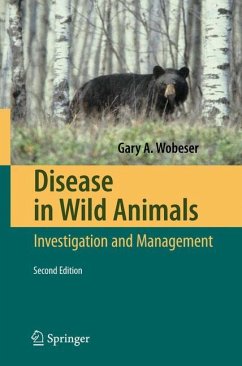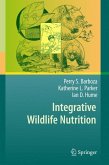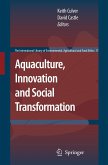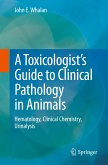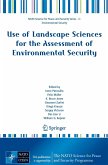This book arose out of teaching graduate and undergraduate classes in wildlife diseases. It, in some ways, chronicles my involvement in the inves- gation and diagnosis of diseases in free-ranging wildlife, primarily in western and northern Canada, since the 1960s. It also, perhaps, reflects the devel- ment of wildlife disease study as a discipline. Much of the earlier work in this field was purely descriptive, documenting the occurrence of various diseases in wild animals. I have chosen to retain references to some older and obscure information in this second edition because this body of work provides the foundation for a more analytical approach. The literature on health problems in free-ranging animals is expanding rapidly. I am gratified that the theor- ical and quantitative aspects of wildlife disease are receiving more attention than in the past, and that role of disease as a factor in population biology is being analyzed. My hope for the first edition of this book was that it would serve as an overview of the study of disease in wild animals and of methods that might be used to manage health problem. It was, and is, not intended to be a how-to book or an encyclopedic reference to the literature on disease; rather it is intended as a seed crystal around which the reader can build. The inquiries I have received about a second edition suggest that it has been useful.
From the reviews of the first edition
"... has done an admirable job of outlining the problems associated with diagnosing and controlling disease in wildlife populations. ... The author has commendably presented a difficult topic and has shown that the usually successful approach to treating disease in domestic animals is extremely difficult and rarely successful in wildlife populations. ... I recommend this book to all who are looking for an introduction to the investigation and managment of disease in wildlife." (Canadian Veterinary Journal)
"... the author has made a major contribution to the field by providing a conceptual framework for wildlife disease investigations and by highlighting the inadequacies that often exist. His willingness to challenge dogma and constructively present perspectives based on a combination of extensive literature review, personal experiences, and beliefs is one of the values of this well organized and easy to read publication. ... this publication should be read by biologists, administrators, and disease specialists having responsibility for combatting disease in populations of free-living wildlife." (Journal of Wildlife Diseases)
"... has done an admirable job of outlining the problems associated with diagnosing and controlling disease in wildlife populations. ... The author has commendably presented a difficult topic and has shown that the usually successful approach to treating disease in domestic animals is extremely difficult and rarely successful in wildlife populations. ... I recommend this book to all who are looking for an introduction to the investigation and managment of disease in wildlife." (Canadian Veterinary Journal)
"... the author has made a major contribution to the field by providing a conceptual framework for wildlife disease investigations and by highlighting the inadequacies that often exist. His willingness to challenge dogma and constructively present perspectives based on a combination of extensive literature review, personal experiences, and beliefs is one of the values of this well organized and easy to read publication. ... this publication should be read by biologists, administrators, and disease specialists having responsibility for combatting disease in populations of free-living wildlife." (Journal of Wildlife Diseases)
From the reviews of the first edition "... has done an admirable job of outlining the problems associated with diagnosing and controlling disease in wildlife populations. ... The author has commendably presented a difficult topic and has shown that the usually successful approach to treating disease in domestic animals is extremely difficult and rarely successful in wildlife populations. ... I recommend this book to all who are looking for an introduction to the investigation and managment of disease in wildlife." (Canadian Veterinary Journal) "... the author has made a major contribution to the field by providing a conceptual framework for wildlife disease investigations and by highlighting the inadequacies that often exist. His willingness to challenge dogma and constructively present perspectives based on a combination of extensive literature review, personal experiences, and beliefs is one of the values of this well organized and easy to read publication. ... this publication should be read by biologists, administrators, and disease specialists having responsibility for combatting disease in populations of free-living wildlife." (Journal of Wildlife Diseases)

